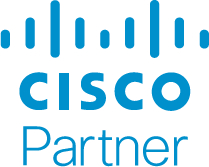December 22, 2023
3 Technology Trends That Are Improving Hybrid Work
Find success with hybrid work by weaving key technology into your long-term strategy, such as Software as a Service, edge computing and artificial intelligence.
With many employers calling for employees to return to the office, the hybrid work model is becoming more common than a fully remote format. In the U.S., it is estimated that 51 percent of knowledge workers will work hybrid and only 20 percent will be fully remote by the end of 2023, according to Gartner.
Whether an organization is hybrid or fully remote, having a digital-first culture and strategy for collaboration is a wise move for ensuring employees are able to do their work in any setting, at any time. This means prioritizing tools and technology that enable your organization to create a digital experience that is scalable, secure, reliable and cost-effective.
Security Challenges Resolved
1. Software as a Service
The various software an enterprise needs to run its business can be difficult to manage and expensive. Shifting to a Software as a Service (SaaS) strategy that relies on cloud-based applications instead of traditional on-premise software apps can help your organization gain flexibility and reduce cost.
Since SaaS applications are cloud-based, employees can access software and relevant data from anywhere with an internet connection. This is important for a hybrid workforce where employees are working from different locations. You do not need to invest in on-premises infrastructure or maintenance of hardware, middlware or software to deliver SaaS, even for complex enterprise applications, because everything is cloud-based and managed by the vendor.
Another benefit of SaaS is scalability. You can easily scale your usage plan up or down and pay for what you use instead of overbuying licenses. This is a great option for organizations with a hybrid work model, where the number of remote and in-office employees may fluctuate. With SaaS technology, it is the vendor’s responsibility to ensure users always have access to the latest and greatest version of software. This not only helps relieve IT teams, who no longer have to do the tedious work of managing updates and maintenance of the software, but also ensures applications are more secure and functional.
2. Edge Computing
As organizations continue to acquire and generate an ever-growing amount of data while also expanding the amount of connected devices, bandwidth and latency can become an issue.
Edge computing can help you optimize day-to-day operations by processing and analyzing large volumes of data at or as close to the source of data as possible, instead of sending it to a centralized cloud or a far away data center.
This is especially helpful for organizations that use a large amount of sensors, cameras or smart devices, whether it be to create a smart workplace or to run business, such as a healthcare organization with smart medical devices or a retailer gathering mass amounts of data in store.
Essentially, fewer processes are run in the cloud and instead moved closer to the data source through a local edge server, minimizing the amount of long-distance communication of data to and from a centralized cloud server. This can help reduce cloud spend since less cloud resources are being used and instead shifted to the edge.
Edge computing can be beneficial to a hybrid work model because it ensures real-time applications, such as video conferencing and collaborative tools, run smoothly for in-office and remote workers, especially those with limited internet bandwidth. The overall performance of resource-intensive applications improves, ensuring a consistent and high-quality user experience. Organizations can also improve reliability through edge computing because it enables certain applications and services to function even when disconnected from the central cloud, which is great for remote locations that have intermittent service.
3. Artificial Intelligence (AI)
Hybrid work is no exception to the strong influence of AI — in fact, most collaboration tools have incorporated AI to enhance to employee experience. For example, when built into web conferencing tools, AI can improve video quality, provide meeting summaries and translations, summarize key talking points and action items, and enhance audio. Many AI-driven meeting enhancement features are also being built into smart office devices, such as video cameras and speakers, to deliver a crystal clear hybrid meeting experience.
AI assistants are also being used throughout office applications to provide employees with recommendations that optimize work and provide better insights. For example, an AI assistant may recommend changing the tone or format of a chat or email message, suggest responses, enhance presentations with creative tips and images created by generative AI, assist with document drafting, provide email thread summaries and more.
Organizations have plenty of opportunities to use AI to help streamline workflows, develop custom chatbots to provide IT support or other employee assistance, improve security or create a smart office experience, but it is up to leaders to decide how to embrace AI.
Developing a Customized Digital Experience for Hybrid Work
Building and deploying a modern workforce is a challenge for many organizations because it seems as if the landscape is always changing. From juggling employee expecations to changing technology, organizations have a lot to consider. However, developing a hybrid work model that fosters a productive environment while also being secure, dynamic and cost-effective is possible. With the right mix of solutions, adequate IT support (internally or externally through a services provider) and a willingness to embrace new strategies, your enterprise can deliver a digital experience that works for all employees.

